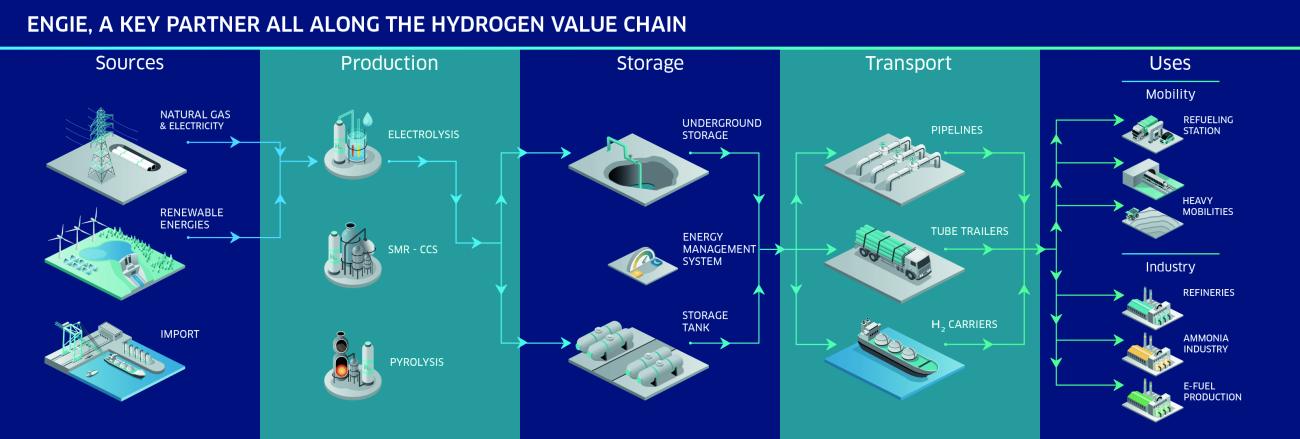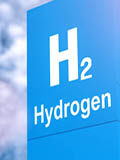
L’hydrogène vert, produit principalement par électrolyse de l’eau à partir d’électricité renouvelable, représente un des leviers d’avenir pour accélérer la transition vers la neutralité carbone : développement de la mobilité verte, décarbonation des usages massifs industriels d’hydrogène (engrais, raffinerie, chimie…), meilleure intégration des énergies renouvelables intermittentes dans le système énergétique, stockage massif des surplus d’électricité produits.
Utilisable en complément de toutes les énergies vertes pour satisfaire et décarboner de nombreux usages, l’hydrogène peut devenir le pilier des territoires 100% renouvelables.
Des solutions hydrogène renouvelable sur l’ensemble de la chaîne de valeur
ENGIE se positionne comme un acteur majeur de l’hydrogène renouvelable, en étant présent sur l’ensemble de la chaîne de valeur de l’hydrogène, de la production d’énergies renouvelables aux utilisations finales.
L’hydrogène vert, élément incontournable du mix énergétique :
- stocker l’énergie et la restituer quand les renouvelables ne produisent pas
- développer une mobilité plus durable
- décarboner les usages industriels
De la recherche à la commercialisation, nous intervenons de la production aux utilisations finales : stratégie, conception, ingénierie, construction d’actifs sobre en énergie, plateformes numériques, exploitation, financement et engagement de résultat.



